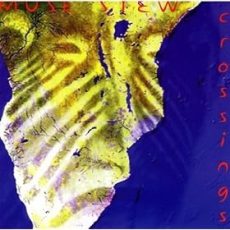
Daily Dose Of Jazz…
Scott Samenfeld was born on October 26, 1951 in New York City and grew up between the city and New Jersey. Moving to Boston, Massachusetts in 1970 he attended Berklee College of Music and has been performing in the Boston area ever since.
The first band Scott founded, Muse Stew, began its life performing jazz and poetry. He currently leads his group performing his original compositions as well as other jazz and Latin artists. They blend African, Afro-Cuban, Brazilian and other folk rhythms of jazz.
Samenfeld performs with a 16 piece big band, the Sounds of Swing Orchestra. They have been performing throughout New England for almost 20 years. As an educator Samenfeld has been a music teacher for many years and taught music theory and jazz guitar at the Guitar Workshop. During the 1970’s he taught jazz ensemble and instrumental music at the Cambridge School in Weston and The Open Road School in Waltham during that period as well.
Scott has focused on composing and performing his music and has been a member of the groups Razzamatazz, Trillium, Favela, and Ibrahima’s World Beat.
Bassist Scott Samenfeld who plays in the mediums of avant garde, bossa nova, and modern jazz, continues to perform, compose and teach.
More Posts: bandleader,bass,history,instrumental,jazz,music
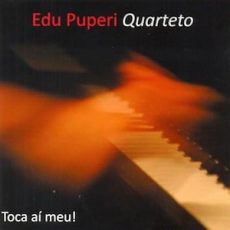
Daily Dose Of Jazz…
Eduardo Puperi was born in Porto Alegre, Rio Grande do Sul, Brazil on October 25, 1969. From 1986 to 1991 he studied music at CLAM, a school directed by Zimbo Trio in São Paulo, Brazil with teachers Fernando Corrêa and Conrado Paulino. He graduated in composition and directing in 1993 from the University of Music and Arts Alcântara Machado (FAAM).
The next year Puperi formed the Ludi & Tiné Quartet with guitarrist Paulo Tiné. The instrumental group that lasted until 1999 and released an album called “Vento Leste” in 1997. He was musical director at Cultura Inglesa in São Paulo from 1996 to 2000, directing the musicals Guys and Dolls, Bye Bye Birdie, Hair, All that Jazz and Fame. From 1991 to 2004 he directed the big bands FAAM Jazz Band, Orquestralha and Swinging Sounds.
His groups have been Aura Tropical and the Edu Puperi Trio, the latter which became a quartet in 2005 with bassist Luis Passos, drummer Humberto Zigler, and tenor and soprano saxophonist and flutist Chiquinho de Almeida. Both groups have released albums.
In 2001 he began teaching piano, guitar and performing practice at Casa de Música Luiz Chaves. Pianist Edu Puperi continues teaching, performing and recording.
More Posts: bandleader,history,instrumental,jazz,music,piano
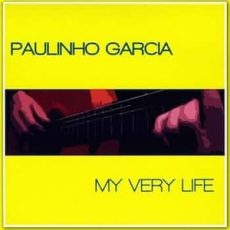
Daily Dose Of Jazz…
Paulinho Garcia was born on August 16, 1948 in Belo Horizonte, Minas Gerais, Brazil and began his musical career at the age of nine as a singer in a Sunday children’s program in the city’s principal radio station, Radio Inconfidencia. His teens saw him performing as a house musician in all musical programs of the Radio network, Guarany—TV Itacolomy.
He led his own band, Os Agitadores, and with them recorded his first two albums. Before his arrival in the United States in 1979, Paulinho composed, arranged, produced, and performed jingles for HP Studios. Four of his commercials received national awards.
After his move to Chicago, Illinois he performed and recorded two albums with the band Made in Brazil. In 1991 he founded his own band, Jazzmineiro, and their 1996 recording received excellent reviews in the Chicago Tribune, Jazziz magazine, the Brazilian Music Review, and The Brazilians.
Paulinho has been the recipient of numerous awards and accolades for his music and bands. He has toured Japan, Poland, Prague, Bratislava, Netherlands, Hong Kong, and Bangkok and performed at several jazz festivals and jazz cruises. With the addition of Polish singer Grazyna Auguscik, Two for Brazil with Greg Fishman became Three for Brazil.
Garcia released My Very Life to critics and audience praise and was nominated for a Grammy for Best Latin Jazz Recording among 25 of the best, and was nominated for the Brazilian International Press Award.
Guitarist and vocalist Paulinho Gatcia continues to perform, tour and record.
More Posts: bandleader,guitar,history,instrumental,jazz,music,vocal
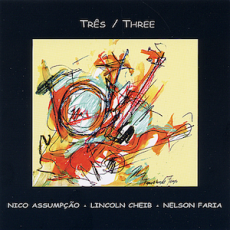
Daily Dose Of Jazz…
Nico Assumpção was born Antônio Álvaro Assumpção Neto on August 13, 1954 in São Paulo, Brazil. His father was a professional bass player, but he debuted in music by playing the acoustic guitar at the age of 10. He took classes with Paulinho Nogueira but changed to bass six years later to fill in the void in a schoolmate’s band.
At 16, he came to the United States to study harmony and orchestration at the University of California. Returning to Brazil he went to study at CLAM, with Brazilian bassists Luis Chaves and Amilton Godoy. In 1976 he again left Brazil and landed in New York City to study and perform on a deeper level. He played with among others Wayne Shorter, Pat Metheny, Sadao Watanabe, Larry Coryell, Fred Hersh, Larry Willis, Joe Diorio, John Hicks, Steve Slagle, Victor Lewis, Dom Salvador and Charlie Rouse.
While in the States he mastered various bass playing techniques, and became one of the pioneers of fretless and 6-string bass in Brazil when he came back in 1981. That same year he released the first bassist solo album in the country, titled Nico Assumpção. The following year he moved to Rio de Janeiro, Brazil where he lived for the rest of his life.
He was one of the most popular bassists in Brazil having played and/or recorded with Milton Nascimento, Caetano Veloso, Gilberto Gil, João Bosco, Maria Bethânia, Edu Lobo, César Camargo Mariano, Toninho Horta, Luiz Avellar, Wauke Wakabaiashi, Marco Pereira, Ricardo Silveira, Nelson Faria, Gal Costa, Hélio Delmiro, Maria Bethânia, Márcio Montarroyos, Raphael Rabello, Léo Gandelman and Victor Biglione, among others.
Bassist Nico Assumpção died from cancer on January 20, 2001 in Rio de Janeiro at age 47.
More Posts: bandleader,bass,history,instrumental,jazz,music
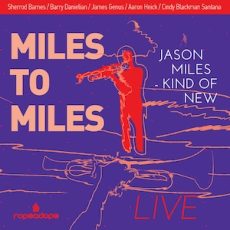
Daily Dose Of Jazz…
Jason Miles was born June 30, 1951 in Brooklyn, New York. He went to Indiana State University and when jazz fusion was becoming popular in the 1970s he was in New York creating innovative techniques in synthesizer programming and electronic music.
In 1979 he recorded his debut album Cozmopolitan with Michael Brecker and Marcus Miller, although it was never released. During the 1980s he was a session musician who worked with Miles Davis, Aretha Franklin, Whitney Houston, Michael Jackson, Chaka Khan, Diana Ross, David Sanborn, and Luther Vandross.
The 1990s had him playing keyboards and writing music for the animated film The Snow Queen and People: A Musical Celebration of Diversity on the Disney Channel. He and his wife Kathy Byalick composed Visionary Path, a New Age album with narration by Diana Krall, Roberta Flack, and F. Murray Abraham.
In 2000 Miles released The Music of Weather Report, the first of several tribute albums. During the next year he won a Grammy Award for producing A Love Affair: The Music of Ivan Lins with appearances by Sting and Brenda Russell. His next solo album To Grover, with Love, was a tribute to Grover Washington Jr. that was nominated for Record of the Year by the National Smooth Jazz Awards. He also recorded tributes to Miles Davis and Marvin Gaye.
Keyboardist, composer and record producer Jason Miles, who has a discography of nineteen albums, continues to compose and perform.
More Posts: bandleader,composer,history,instrumental,jazz,keyboards,music,record producer




